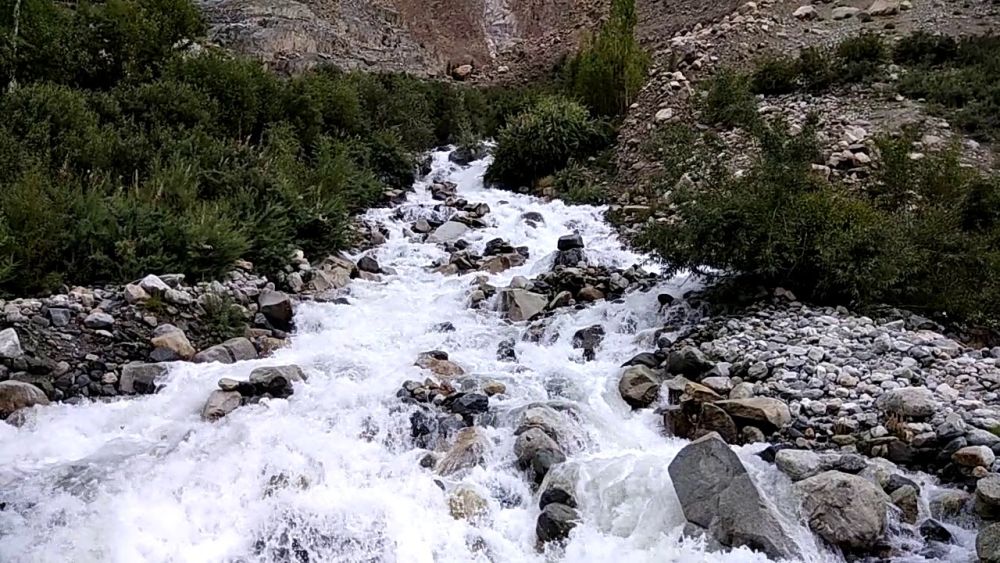

Ladakh, often referred to as the "Land of High Passes," is renowned for its remote beauty and unique cultural tapestry. Amidst this striking region lies Turtuk, a quaint village that boasts a hidden treasure - the Turtuk Waterfall. This enchanting spot has only recently caught the attention of travel enthusiasts and remains one of the less frequented sites in Ladakh.
The history of tourism in Turtuk is deeply intertwined with the broader narrative of Ladakh and its emergence as a tourist destination. The area opened up to tourists in the 1970s when adventurers began to explore the rugged terrains. However, Turtuk, being close to the contentious India-Pakistan border, was off-limits to tourists until 2010 when it was finally opened for tourism, revealing its pristine beauty and cultural richness to the outside world.
Initially known for its apricot orchards and the warmth of the Balti people, Turtuk now also draws visitors to the Turtuk Waterfall—a picturesque cascade that has added a new facet to the village’s allure. The waterfall is set against a backdrop of stark mountains and vibrant green fields, creating a compelling contrast that mesmerizes visitors.
In recent years, travelers have pursued more off-the-beaten-path experiences, and Turtuk fits this trend perfectly. The village of Turtuk and its waterfall have become a destination for those wanting to escape the more crowded tourist spots in Ladakh, such as Leh and Pangong Lake.
Eco-Tourism: With growing awareness about environmental conservation, eco-tourism is also gaining popularity in Turtuk. Tour operators and local organizations are increasingly emphasizing sustainable travel that supports the local economy and minimizes impact on the fragile high-altitude ecosystem.
Cultural Tourism: Travelers to Turtuk are also drawn to its rich cultural heritage. The village offers a unique blend of Indian and Pakistani cultures, with Balti language, cuisine, and traditional ways of life providing a cultural feast for visitors. Local homestays and cultural programs are being organized to cater to this interest.
Adventure Tourism: Apart from the peaceful allure of the waterfall and the cultural immersion, Turtuk also serves as a starting point for various treks and adventure activities in the region. The challenging terrains around Turtuk are perfect for trekkers looking for untouched trails.
Visiting Turtuk Waterfall promises a serene experience far from the hustle of urban life. The best time to visit is during the summer months, from May to September, when the weather is most favorable. During this period, the snowmelt feeds the waterfall, ensuring it's at its most spectacular. Travelers can enjoy the lush green environment and the cultural vibrancy of the local festivals during this time.
As Turtuk is a sensitive border area, it is important for visitors to carry valid identity proof and permits. Access to the Turtuk Waterfall and the village is governed by strict regulations to ensure the safety and security of both travelers and residents.
The journey to the waterfall itself is an adventure, involving a drive through the Nubra valley followed by a short trek to reach the falls. The enchanting view of the waterfall cascading down is well worth the journey and provides a perfect setting for photography, meditation, and a moment of tranquility amidst the majestic Himalayas.
With the increase in tourism, there has been a corresponding surge in infrastructure with guesthouses and eateries catering to different budgets. However, visitors are encouraged to maintain the purity of the area by being responsible tourists and following ecotourism practices.
The Turtuk Waterfall remains one of the lesser-known jewels in Ladakh's crown, perfect for those who seek solace in nature's lap and for those desiring to understand the rich tapestry of cultures in this far-flung region of India.